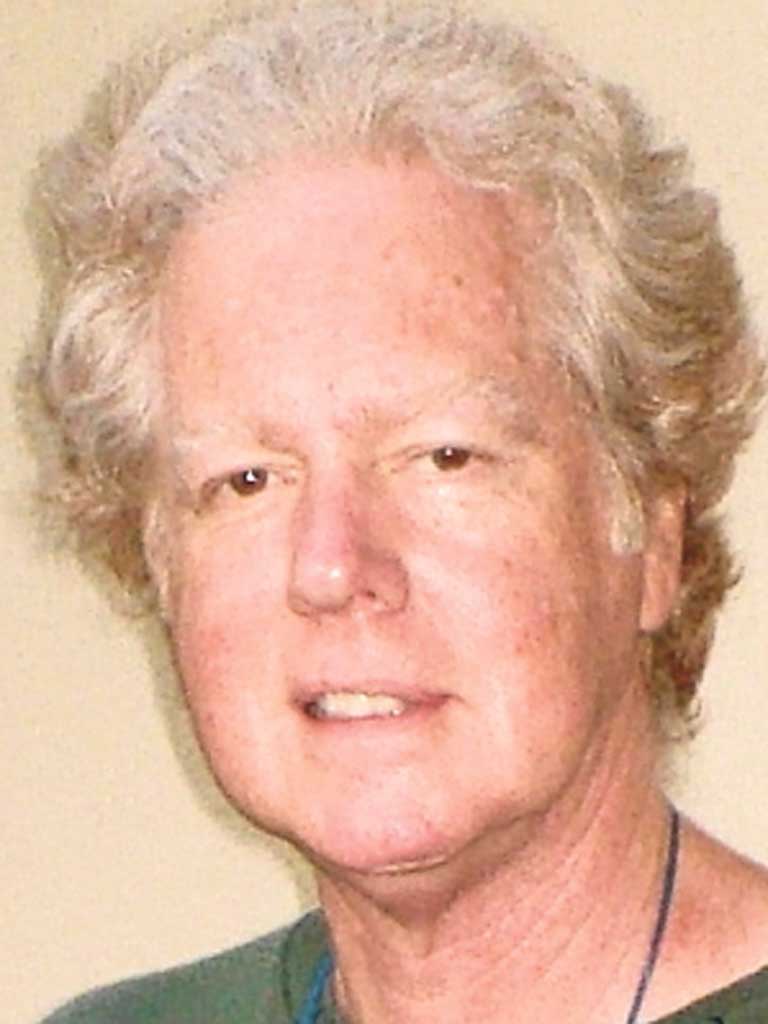Larry Keenan: Photographer who captured Dylan, Ginsberg and the Sixties counter-culture

In December 1965, as Bob Dylan's controversial tour, carrying his newly amplified sound across the US, arrived in Northern California, the singer reacquainted himself with his Beat poet friend Allen Ginsberg, then staying on the West Coast. When the two showed a public display of loyalty outside City Lights Bookstore in San Francisco, a 22-year-old photographer captured this intriguing meeting of the folk hero and the literary muse. Larry Keenan was the young cameraman whose shots provided a historic record of that Dylan-Ginsberg summit. When the two were joined by others, including the poets Lawrence Ferlinghetti, Michael McClure and David Meltzer and the author Richard Brautigan, not to mention the guitarist Robbie Robertson, this rendezvous was soon referred to as the Last Gathering of the Beats, that group of radical writers who had challenged American convention head-on in the 1950s.
Born in San Francisco in 1943, Keenan had been a student of McClure's at the California College of Arts and Crafts in the early 1960s and had already become involved in photographic ventures with the poet, showing a clear talent with the camera. When McClure heard that Dylan and Ginsberg were planning to meet outside Ferlinghetti's famed paperback store on Columbus Avenue in North Beach, he called on his inexperienced, but more than able, protégé to document the session.
The opportunity helped cement the young man's early professional reputation and he spent time capturing the sights and scenes of the Bay Area's fertile cultural realm, photographing artists like Bruce Conner, rock acts such as Jefferson Airplane and Country Joe, LSD evangelists Tim Leary and Ken Kesey, and many of the other key Beats, including Ginsberg's lover Peter Orlovsky and Neal Cassady, the basis of the mercurial hero in Jack Kerouac's novel On the Road.
Yet if Keenan – whose rare ability to frame a shot and utilise the black-and white-medium to the full was speedily recognised – was interested in his countercultural subjects and saw them as potent creative material, he had no real attraction to the wilder lifestyle that became synonymous with San Francisco after 1967's Summer of Love flourished and acid rock became the new soundtrack to hippie life in Haight-Ashbury. After graduating, in the latter years of the decade he taught in a Concord high school before striking out as a freelance.
Keenan then emerged as an in-demand and innovative cameraman, committed to his craft, and, as the decades unfolded, his output would attract the attention of exhibitors, not to mention garnering accolades and awards. He displayed an original artistic eye, his efforts transcending mere portraiture or images of record, and major museums like the Whitney, the de Young and the Smithsonian included his images in their shows and collections.
"During the '70s, Larry had a photo studio in San Francisco and was well-known among art directors for the in-camera visual magic he could perform," recalled Keenan's college contemporary, his long-time friend and fellow photographer Dale Smith. "This was before Photoshop. Larry would create elaborate set-ups and photograph his images on one piece of film, using a masking system he had devised. In this way he was a pioneer in creative imagery."
Still based in California, he lived close to the city of Berkeley in Emeryville, but, at the start of the new century his health began to deteriorate. A condition linked to Parkinson's disease affected him and his picture-taking abilities diminished. When I interviewed him at his home in 2004, his demeanour was bright, welcoming and friendly but the slurred speech, an early sign of a creeping and serious illness, was clearly frustrating to this enthusiastic communicator. By the time of his death the disease had developed into Multiple System Atrophy, and the skill that had sustained an extended career was largely lost. But Keenan's legacy lives on in his impressive archive, which was always impeccably ordered, and memories of the man are uniformly warm. Brenda Knight, author of the influential Women of the Beat Generation, said, "People were so relaxed around Larry, even irascibles like Dylan, [Dennis] Hopper, and Ginsy [Ginsberg] that they allowed him to see their 'real selves'. Not many photographers have that rare gift. He was special and very kind. I was always struck by his generosity of spirit."
Gerald Nicosia, who wrote the key Kerouac biography Memory Babe, recalls Keenan's rare nature. "One is always a little afraid of meeting great artists of any kind. Their egos are often huge and thorny as a century-old rosebush. What I remember best about Larry was his huge humility. When I told him how great I thought his photography was, his face just beamed with happiness and even gratitude. He thanked me for saying such kind things, but I told him I was simply stating the truth – his work was extraordinary by anyone's standards."
The co-creator of Keenan, a 2012 documentary celebrating the photographer's life and work, was equally complimentary. Kurt Hemmer told the magazine Beat Scene earlier this year that "Larry was an artist, whose eye was exceptional." That eye for photographic composition, he said, allowed him to "capture something about the soul of his subject."
David Meltzer, one of the poets photographed in the City Lights group in 1965, added: "I was very sad about Larry, that he suffered for so long. The last time I saw him was at a reading; he was reduced to moving about in an electric wheelchair. He looked wan and somewhat embarrassed to be there. Yet he could still take pictures, though with increasing difficulty. I knew him through the decades as an extremely sweet and enthusiastic presence and feel, once more, another absence. These days one sometimes gets overwhelmed by the presence of absence."
Lawrence Alexander Keenan, Jr., photographer: born San Francisco 20 November 1943; twice married (one daughter); died Emeryville 12 August 2012.
Join our commenting forum
Join thought-provoking conversations, follow other Independent readers and see their replies
Comments